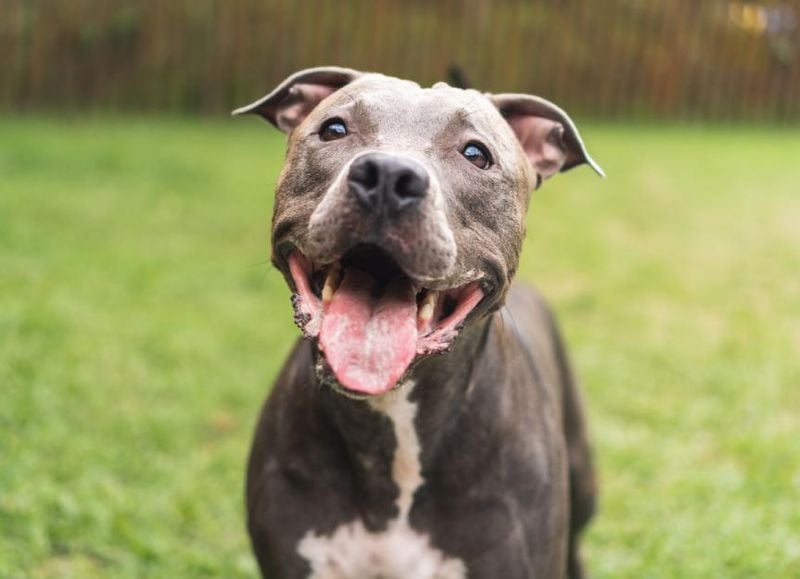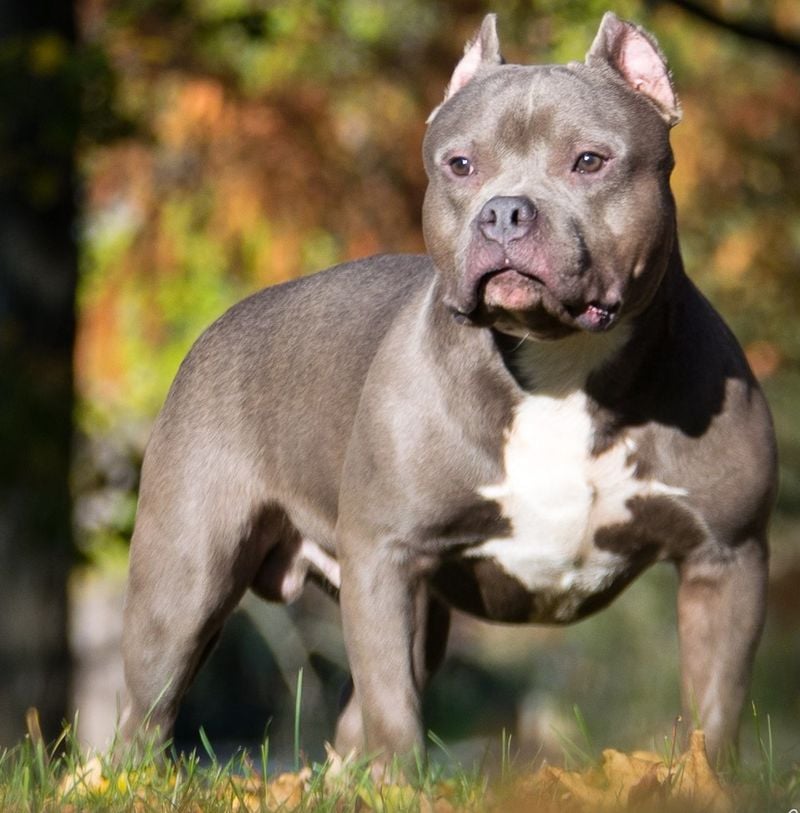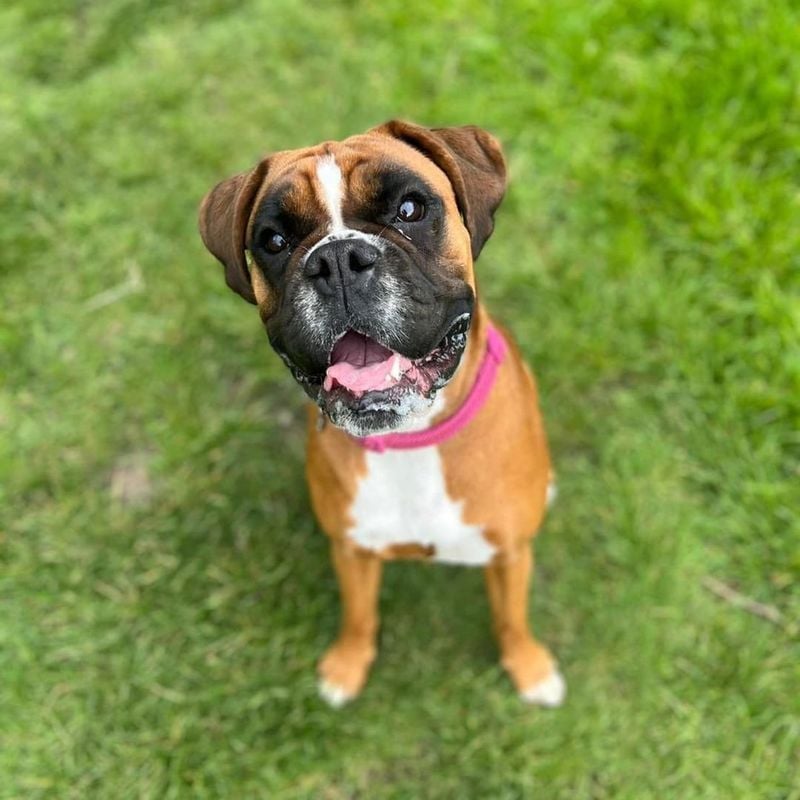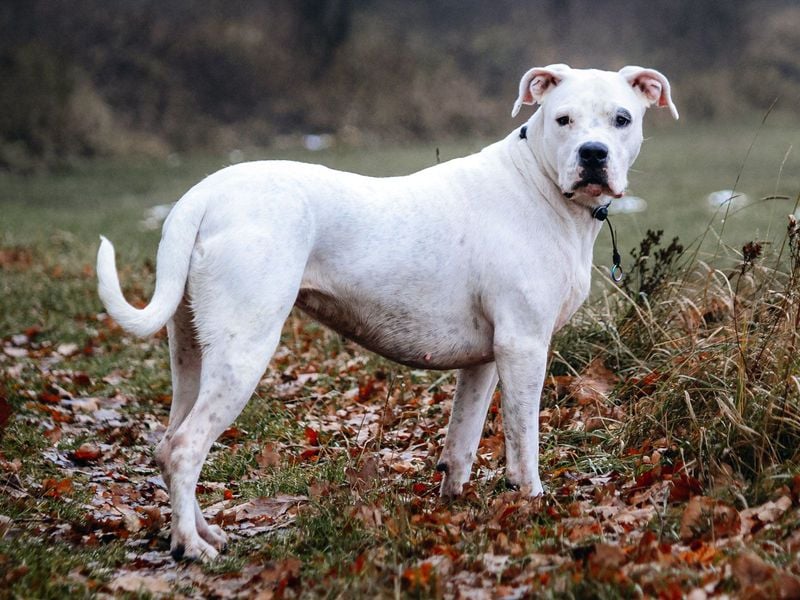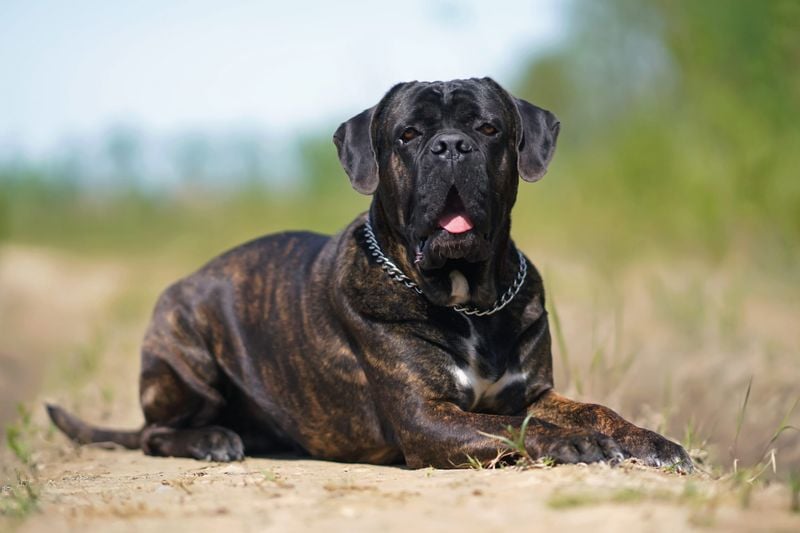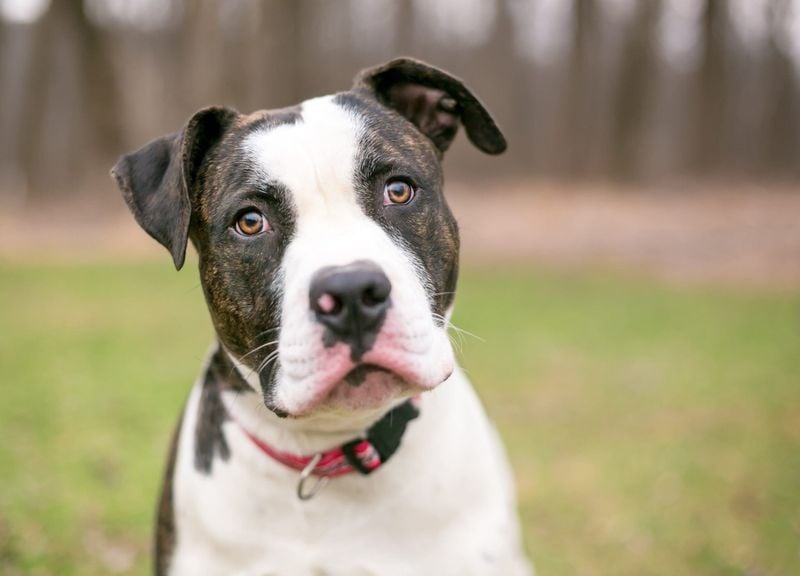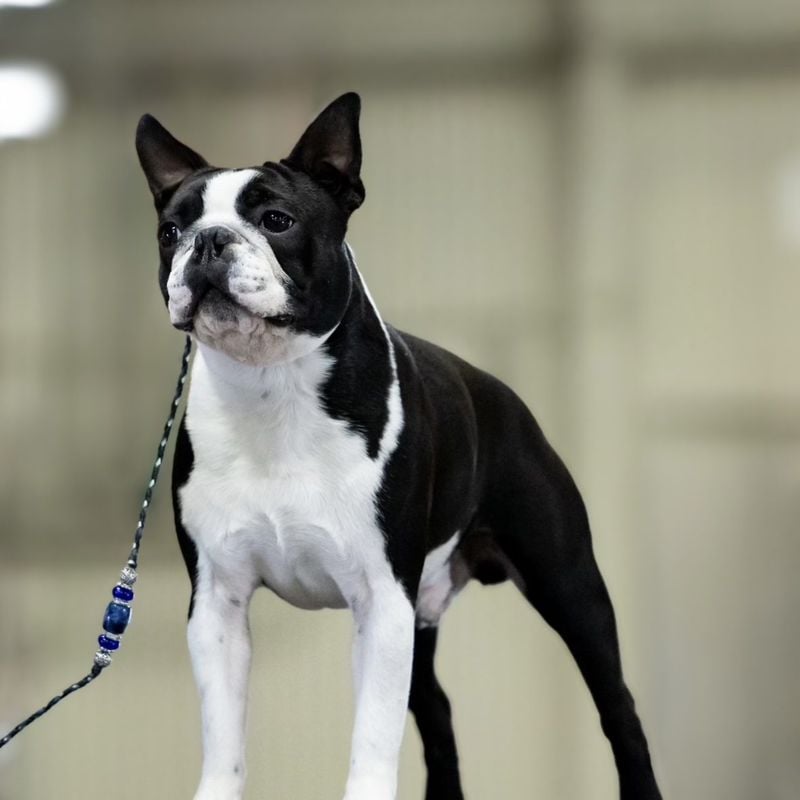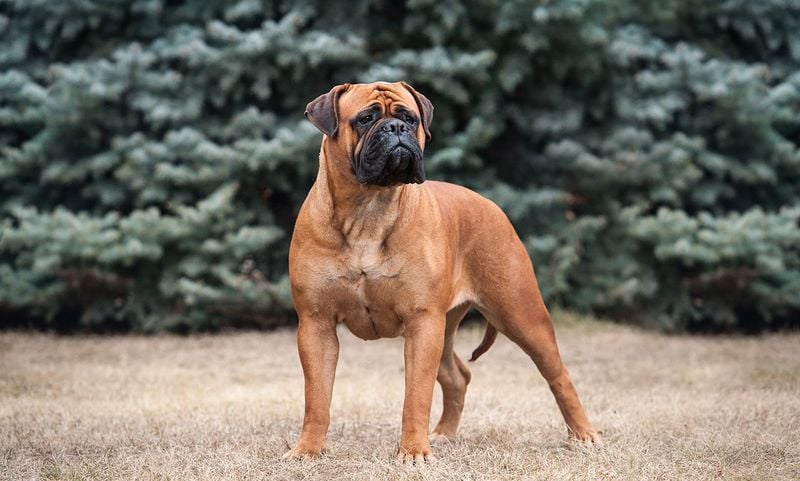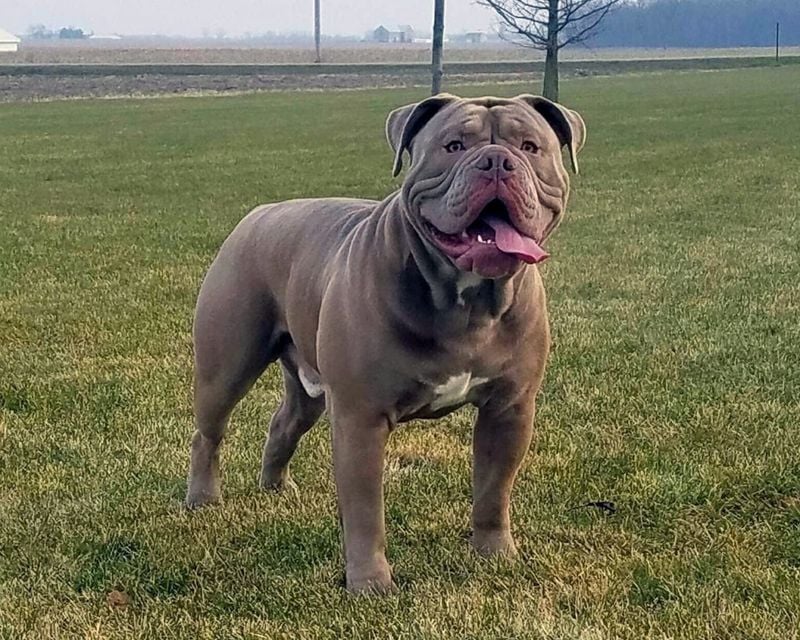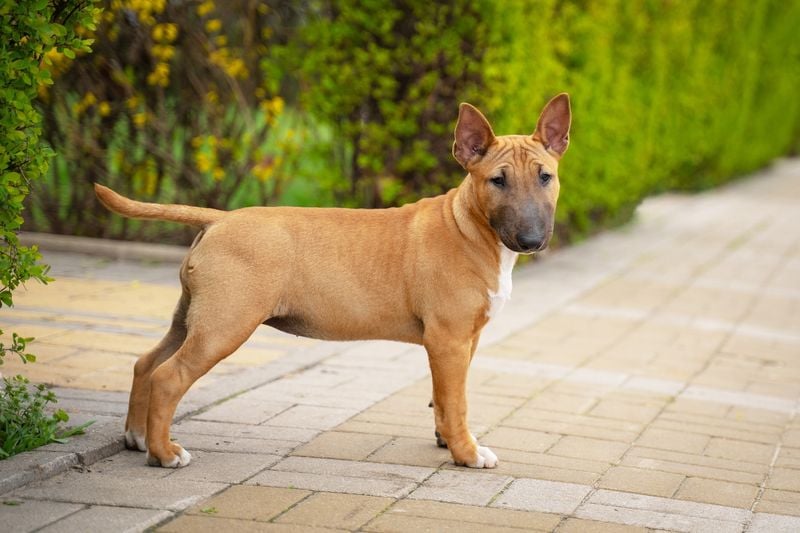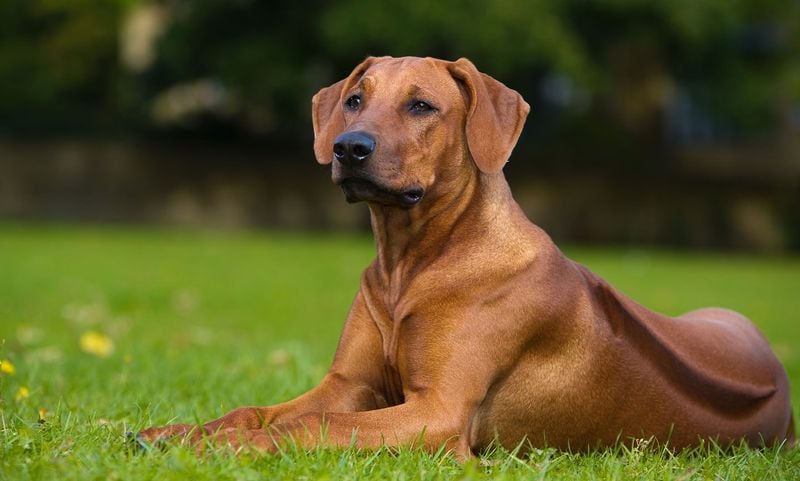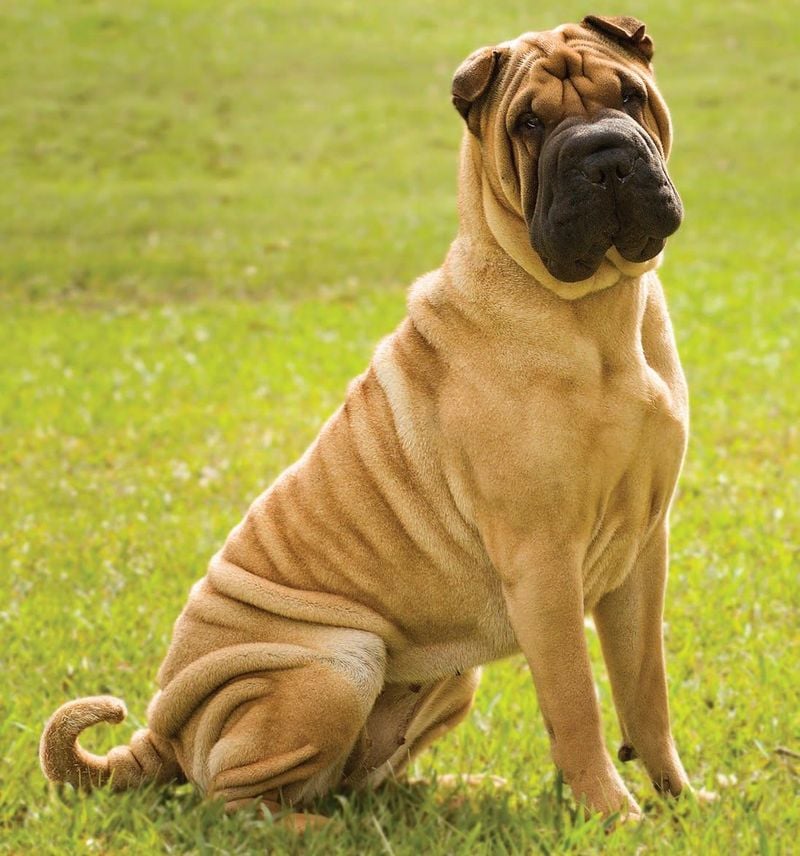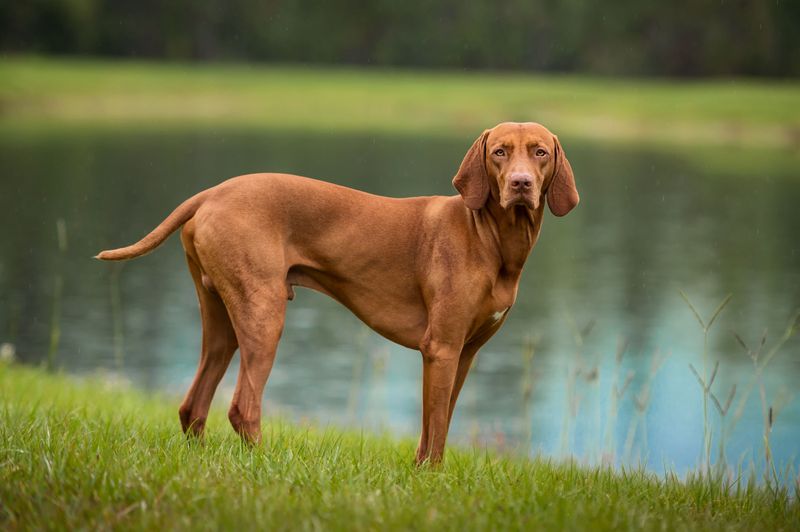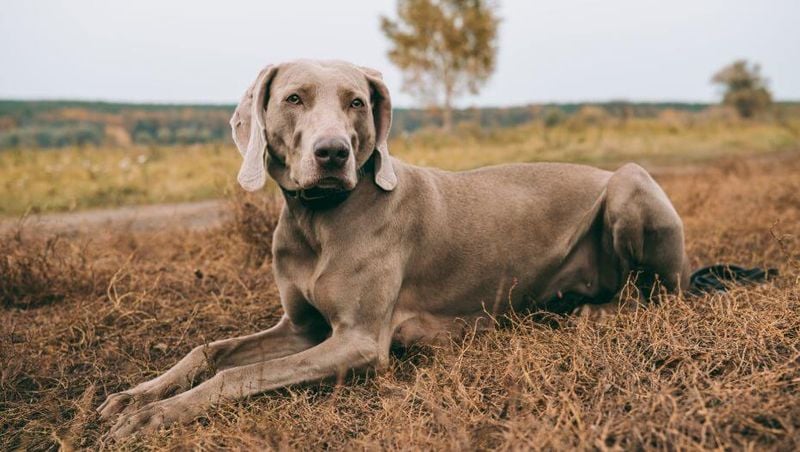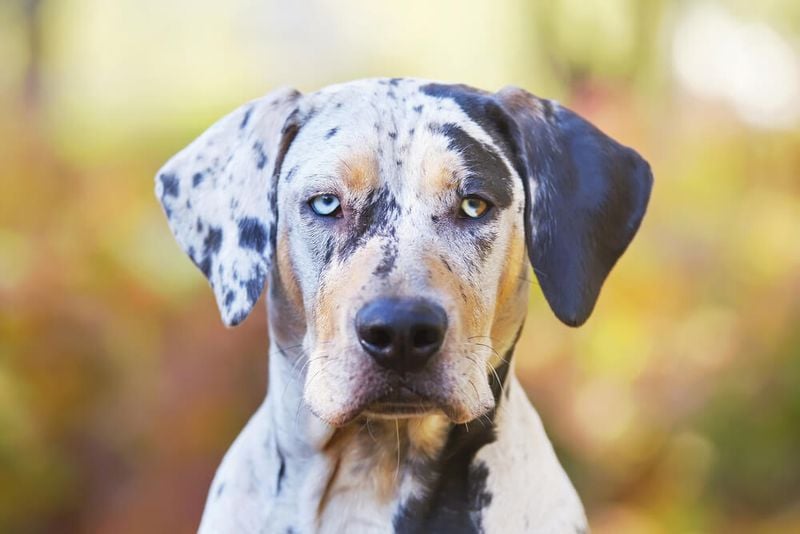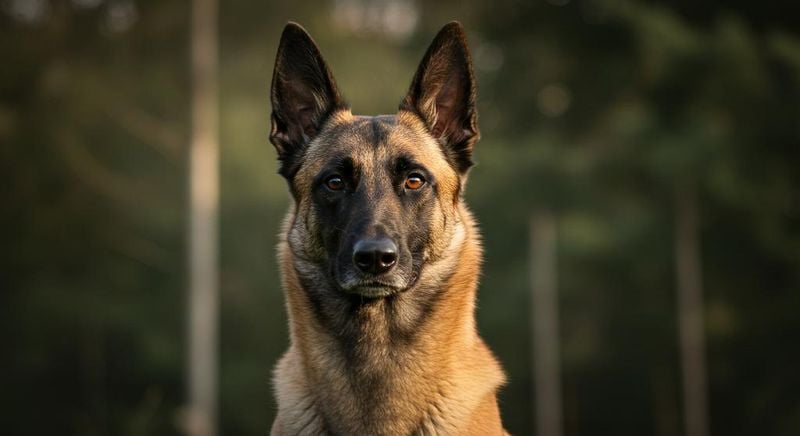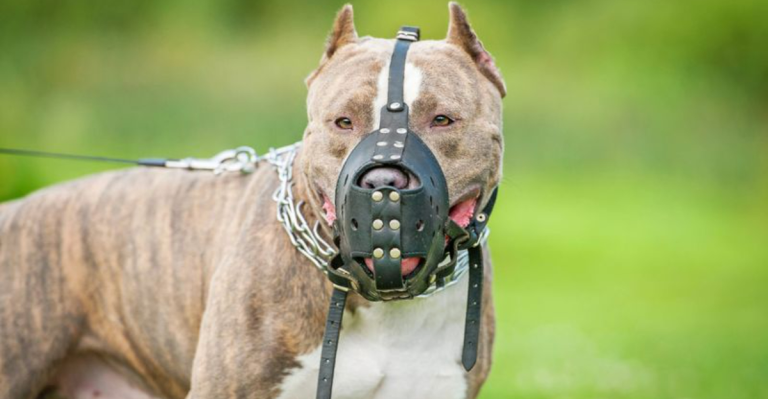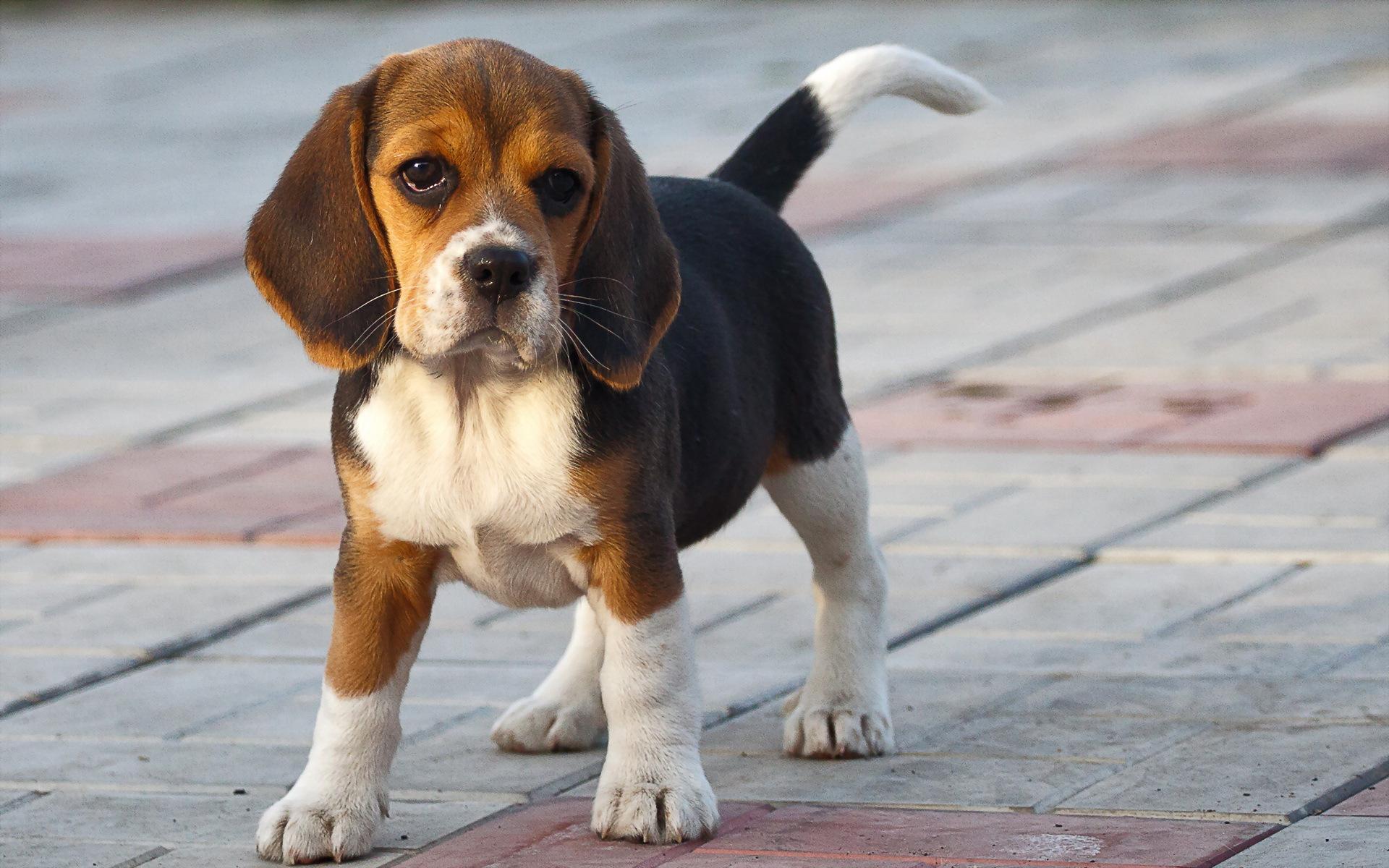22 Dog Breeds That Look So Much Like the American Staffordshire Terrier
The American Staffordshire Terrier is a breed that commands attention. With its muscular physique, broad, blocky head, and confident, alert stance, it’s easy to see why people are drawn to this powerful yet deeply affectionate companion.
Bred originally for strength and tenacity, today’s AmStaff is more likely to be found curled up on the couch or playing fetch in the yard than facing off in the ring. Their loyal nature, intelligence, and deep bond with their families make them a favorite among dog lovers.
But for all their distinct personality, AmStaffs are often confused with other breeds—and not just by casual observers. Even seasoned dog owners sometimes find it hard to tell them apart from similar-looking canines.
Whether it’s the stocky build, square jawline, or the confident swagger, plenty of other breeds share the AmStaff’s signature features. Some are close relatives, while others just happen to have evolved a look that mirrors this breed’s unmistakable charm.
In this roundup, we’re taking a closer look at 22 dog breeds that bear a striking resemblance to the American Staffordshire Terrier. From muscular guardians to compact powerhouses, these dogs might just make you do a double take at the dog park—and leave you wondering if you’ve spotted an AmStaff or one of its many lookalikes.
1. American Pit Bull Terrier
Practically twins with the Am Staff, these muscular canines share almost identical DNA. The slight differences lie in build – Pit Bulls often appear leaner with less bulk across the chest and shoulders.
Many enthusiasts argue they’re essentially variations of the same breed with different registry standards. Their expressive eyes and characteristic ‘smile’ make them equally charming companions.
Historically bred for strength and tenacity, modern Pit Bulls showcase their intelligence and eagerness to please in agility competitions and therapy work rather than the fighting pits of their controversial past.
2. Staffordshire Bull Terrier
Compact powerhouses with hearts of gold, Staffies pack impressive muscle into a smaller frame than their Am Staff cousins. Their characteristic wide grin and rose-shaped ears create an unmistakable expression that melts hearts instantly.
Originally from England’s mining districts, these dogs were bred for courage and tenacity but also for gentleness with family. Most weigh between 24-38 pounds – significantly lighter than Am Staffs.
Their nickname “nanny dogs” comes from their legendary patience with children. Despite their tough appearance, properly socialized Staffies typically show remarkable tolerance and affection toward people.
3. Bull Terrier
Instantly recognizable by their egg-shaped heads and triangular eyes, Bull Terriers share the muscular build of Am Staffs but with a completely unique profile. Their curved foreheads and downward-sloping noses create an unmistakable silhouette unlike any other breed.
Behind that distinctive appearance lies a playful spirit often described as “a three-year-old child in a dog suit.” These clownish companions maintain puppy-like enthusiasm well into adulthood.
Famous Bull Terriers include Spuds MacKenzie from Bud Light commercials and the Target mascot. Despite their comedic personality, they possess the same athletic ability and strength found in their Am Staff relatives.
4. American Bully
Born from selective breeding programs in the 1990s, American Bullies represent what happens when you emphasize the most powerful physical traits of Am Staffs and other bully breeds. Their exaggerated muscles, massive heads, and impressive chest width create an imposing first impression.
Unlike their athletic ancestors, American Bullies were specifically developed as companion animals rather than working dogs. This focus on temperament has created a surprisingly gentle giant that excels as a family pet.
They come in four size varieties: Pocket, Standard, Classic, and XL. Despite their intimidating appearance, responsible breeders prioritize stable temperaments and good health over extreme physical features.
5. Boxer
Eternal puppies at heart, Boxers share the Am Staff’s athletic build and expressive face, though with a more rectangular muzzle and distinctively wrinkled forehead. Their playful head tilts and bouncy movements make them instantly recognizable to dog lovers everywhere.
German in origin, these dogs were developed from extinct bullenbeissers and English bulldogs. Their name comes from their tendency to use their front paws while playing, almost like a boxer sparring.
White markings on their chest and face (called “flash”) add character to their fawn or brindle coats. Unlike Am Staffs, Boxers have slightly longer legs and a more pronounced tuck-up at the waist, giving them a leaner silhouette.
6. Dogo Argentino
Draped in pristine white coats, these powerful Argentine hunters possess the same muscular frame and determined expression as Am Staffs, but on a larger scale. Standing up to 27 inches tall, Dogos command attention with their imposing presence and alert demeanor.
Created specifically for big game hunting, these dogs can track wild boar through challenging terrain for hours. Their high prey drive requires experienced handling and thorough socialization from puppyhood.
Unlike the often colorful Am Staffs, Dogos must be completely white according to breed standards (small markings on the head are tolerated but considered a fault). Their short coat and pink skin make sun protection essential during outdoor activities.
7. Cane Corso
Ancient Roman war dogs reborn, Cane Corsos share the Am Staff’s muscular build and confident demeanor but with a more substantial frame and serious expression. Their name derives from “cohors,” Latin for “guardian” or “protector” – a role they still excel in today.
Males typically weigh 100-120 pounds, making them significantly larger than Am Staffs. Their imposing presence is softened by deeply affectionate bonds with family members.
Traditional ear cropping practices have unfortunately obscured one of their most expressive features. Natural Corso ears show remarkable expressiveness, from alert attention to gentle relaxation, adding another dimension to their already impressive communication skills.
8. Presa Canario
Formidable guardians from the Canary Islands, Presas combine the Am Staff’s powerful jaw and muscular build with a significantly larger frame and more intense territorial instincts. Their deep-set eyes convey a watchfulness that has made them respected working dogs for centuries.
Originally bred to manage cattle and eliminate feral dogs, modern Presas require owners committed to proper training and socialization. Their coat comes in all shades of brindle as well as fawn, often with white markings on the chest.
While they share the Am Staff’s loyalty, Presas typically show more reservation with strangers. Their powerful presence (males reach 110-130 pounds) creates natural deterrence even without aggressive behavior.
9. American Bulldog
Working farm dogs with unmistakable presence, American Bulldogs share the Am Staff’s athletic ability and determined expression but with a heavier bone structure and looser skin around the head. Their powerful bodies were developed for catching feral livestock and protecting property in the American South.
Two distinct types exist: the heavier Johnson type (more Bulldog-like) and the athletic Scott type (more similar to Am Staffs). Both varieties showcase impressive strength and surprising agility for their size.
Unlike many bully breeds, American Bulldogs typically have natural ears that stand semi-erect when alert. Their working heritage shows in their need for regular exercise and mental stimulation to prevent destructive behaviors.
10. English Bulldog (Athletic Lines)
Selective breeding for more athletic builds has created English Bulldogs that share surprising similarities with Am Staffs. These healthier specimens feature better proportions, more moderate wrinkles, and improved breathing compared to show-line Bulldogs.
Athletic Bulldogs demonstrate the stamina that made their ancestors formidable working dogs before extreme breeding created the ultra-short muzzles common today. Their wider nostrils and slightly longer snouts allow for better oxygen intake during exercise.
While still maintaining the characteristic Bulldog charm and stocky build, these dogs can actually participate in activities beyond short walks. Their friendly, easygoing temperament matches the Am Staff’s reputation as a good-natured companion.
11. Boston Terrier (Large Specimens)
America’s original gentleman dog occasionally produces larger individuals that bear striking resemblance to smaller Am Staffs. While standard Bostons weigh under 25 pounds, oversized specimens can reach 30-35 pounds with similar muscular proportions to their bigger bully cousins.
The characteristic tuxedo pattern remains, but larger Bostons display more substantial heads and broader chests than their standard counterparts. Their bat-like ears and expressive eyes retain the breed’s signature charm regardless of size.
Unlike Am Staffs, even large Bostons maintain their breed’s brachycephalic (short-muzzled) profile. This distinctive face combined with their compact, muscular body creates a unique but recognizably similar silhouette to the American Staffordshire Terrier.
12. French Bulldog
Beloved companions with bat ears and square jaws, Frenchies share the Am Staff’s broad head structure and muscular neck, albeit in a much smaller package. Their stocky build and confident stance create a miniaturized version of the bully breed silhouette.
Originally developed as ratters in English lace factories before becoming fashion accessories in France, these dogs maintain surprising strength despite their compact size. Their expressive eyes communicate a range of emotions that endear them to millions of fans worldwide.
Unlike Am Staffs, Frenchies are brachycephalic (short-faced) breeds that require special care in hot weather. Their distinctive snorting and snuffling sounds come from compressed airways – a stark contrast to the athletic Am Staff’s efficient breathing.
13. Bullmastiff
Gentle giants with guardian instincts, Bullmastiffs represent what happens when you scale up many of the Am Staff’s physical traits. Their massive heads feature the same broad skull and strong jaw structure but with added wrinkles and more pronounced jowls.
Developed by English gamekeepers to tackle poachers, these powerful dogs can weigh up to 130 pounds. Despite their intimidating size, well-bred Bullmastiffs typically show remarkable gentleness with family members and controlled responses to threats.
Their short coat comes in fawn, red, or brindle – often with a black mask that adds to their imposing expression. Unlike the energetic Am Staff, mature Bullmastiffs typically have lower energy levels and are content with moderate daily exercise.
14. Olde English Bulldogge
Recreation attempts to restore the athletic working Bulldog of the past have produced the Olde English Bulldogge – a dog sharing many physical traits with Am Staffs. Their powerful build combines the muscularity of modern bully breeds with a more moderate structure designed for improved health and mobility.
Unlike their English Bulldog cousins, these dogs can breathe normally and give birth naturally. Their athletic ability would surprise anyone familiar only with modern show Bulldogs.
Standing 17-20 inches tall and weighing 50-80 pounds, they closely match Am Staffs in size. Their temperament balances the guardian instincts of their ancestors with the stable, friendly disposition that makes modern bully breeds such beloved companions.
15. Miniature Bull Terrier
Mischievous comedians in sturdy packages, Mini Bull Terriers pack all the character of their larger cousins into a more compact frame that sometimes gets mistaken for small Am Staffs. Their distinctive egg-shaped heads and triangular eyes create the same unique profile as standard Bull Terriers.
Weighing 18-28 pounds, these pint-sized powerhouses maintain the muscular build and determined expression that characterizes bully breeds. Their playful antics and stubborn streak have earned them the nickname “the kid in a dog suit.”
White is the most common color, but they also come in brindle, black, red, and various patterns. Despite their smaller size, Mini Bulls need substantial exercise and mental stimulation to prevent their creative minds from finding destructive outlets.
16. Rhodesian Ridgeback
African lion hunters with distinctive back ridges, Ridgebacks share the Am Staff’s athletic build and confident demeanor but with a taller, leaner frame. Their amber eyes convey the same intense focus and intelligence that makes bully breeds such capable working dogs.
The hallmark ridge – a strip of backward-growing hair along the spine – sets them apart from other muscular breeds. Their short wheaten coat provides similar easy maintenance to the Am Staff’s sleek covering.
Originally bred to track and hold lions at bay (never to kill them), Ridgebacks combine impressive courage with surprising gentleness toward family members. Their independent nature requires consistent, positive training methods similar to those effective with Am Staffs.
17. Shar Pei (Traditional Type)
Ancient Chinese guardian dogs with distinctive wrinkles, traditional Shar Peis (not the extremely wrinkled show versions) share surprising similarities with Am Staffs. Their broad, powerful heads and muscular bodies create a similar silhouette when viewed from a distance.
The “bone-mouth” or traditional type has moderate wrinkles concentrated mainly on the face and withers rather than covering the entire body. Their more athletic build allows for greater mobility and fewer health issues than extremely wrinkled specimens.
Their unique blue-black tongue and hippopotamus-like muzzle shape provide distinctive differences upon closer inspection. Like Am Staffs, traditional Shar Peis combine protective instincts with deep loyalty to their chosen people.
18. Vizsla (Stocky Lines)
Hungarian pointers with rusty golden coats, stockier Vizslas can resemble red Am Staffs in build and expression. While typically lean and aristocratic, some working lines produce more substantial individuals with muscular shoulders and powerful hindquarters similar to bully breeds.
Their expressive amber eyes and attentive expressions mirror the intelligence and emotional sensitivity found in well-bred Am Staffs. Both breeds form intense bonds with their people and thrive on regular interaction and inclusion in family activities.
Unlike most bully breeds, even stocky Vizslas maintain their breed’s characteristic “velcro dog” neediness for physical contact. Their short, rust-colored coat requires minimal grooming similar to the Am Staff’s easy-care covering.
19. Weimaraner (Short-Haired)
Silver-gray ghosts with piercing eyes, muscular Weimaraners share the Am Staff’s athletic build and confident stance but with longer legs and a distinctive aristocratic expression. Their smooth, sleek coats highlight well-defined muscles similar to those admired in bully breeds.
Originally bred for hunting large game like deer and bear, these German dogs possess comparable strength and courage to Am Staffs. Their high energy level and intelligence require similar dedication to training and exercise.
Unlike Am Staffs, Weimaraners are known for extreme attachment to their people, often suffering separation anxiety without proper conditioning. Their distinctive gray coloration ranges from mouse-gray to silver, creating an unmistakable appearance despite structural similarities.
20. Labrador Retriever (Field Lines)
America’s favorite dog occasionally surprises people with its resemblance to Am Staffs, particularly field-bred Labs with their athletic builds and broad heads. These working retrievers lack the excessive bulk of show-line Labs, instead displaying the lean muscle and athletic proportions that characterize functional bully breeds.
Their friendly expressions and wagging tails mirror the welcoming nature of well-socialized Am Staffs. Both breeds share reputations as devoted family companions with special affinity for children.
Field Labs typically stand 21-25 inches tall and weigh 55-75 pounds – closely matching Am Staff dimensions. Their weather-resistant double coat differs significantly from the Am Staff’s single-layer covering, requiring more regular brushing especially during seasonal shedding periods.
21. Catahoula Leopard Dog
Louisiana’s state dog boasts a muscular frame and confident demeanor strikingly similar to Am Staffs, though with more varied coat patterns. Their powerful build combines strength with the agility needed for their traditional work controlling wild hogs and cattle in challenging terrain.
Glass eyes (pale blue) or cracked eyes (partially blue) add to their distinctive appearance. Their coat patterns range from solid colors to merle, brindle, or patchwork combinations – often with leopard-like spots that give the breed its name.
Like Am Staffs, Catahoulas form strong bonds with their families while maintaining some natural reserve with strangers. Their working heritage creates a similar need for both physical exercise and mental challenges to prevent boredom-related behaviors.
22. Belgian Malinois
Elite working dogs with incredible drive, Malinois share the Am Staff’s athletic build and muscular definition but with a taller, leaner frame designed for endurance. Their alert expressions and confident stance create a similar impression of capability and strength.
Favored by military and police units worldwide, these shepherd dogs combine intelligence with physical prowess. Their short fawn coat with black overlay requires minimal grooming similar to the Am Staff’s easy-care covering.
While both breeds excel in various dog sports, Malinois typically display higher energy levels and more intense work drive than even the most athletic Am Staffs. Their natural protective instincts require careful socialization and consistent training from an experienced handler.

